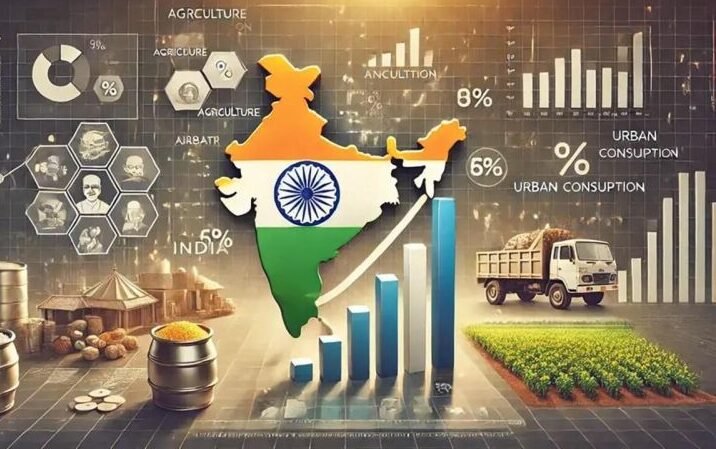On September 3, 2025, the 56th GST Council meeting, led by Union Finance Minister Nirmala Sitharaman, launched a bold set of reforms that blended affordability with ambition. Taking cues from PM Narendra Modi’s August 15 Red Fort vision, the revamp trims GST slabs, cuts compliance clutter, and gives a turbo boost to sectors like textiles, leather, and handicrafts. Think of India’s economy as a car where the engine is everyday spending from groceries to gadgets powering over 60.5% of GDP. The new reforms act like a turbo boost, making goods cheaper and nudging people to spend more. That extra consumption could add up to 0.5% more growth within two years, cushioning India against external speed bumps like US tariffs. In short, when wallets open wider at home, global shocks sting a little less.
Tax Slashes That Throw a Budget Bash!
Picture this: your grocery basket is suddenly a little lighter on the pocket. Everyday must-haves like UHT milk, paneer, khakhra, and even those irresistible biscuit packets now attract just 0% to 5% GST instead of the earlier 5–12%. That’s a direct saving every time you shop. And it’s not just your pantry celebrating, the lifestyle lane is joining in too. Heading to the gym, signing up for yoga, or booking that much-needed salon refresh? The tax on these services has dropped sharply from 18% to just 5%.
These cuts are more than tax tweaks; they’re a strategic push to put more disposable income back into households. The ripple effect? Greater affordability, a boost to consumption, and extra fuel for India’s growth engine.
These cuts are a wallet-friendly hug for India, leaving more cash for that extra kulfi.
Compliance, without Compromise
The GST Council unveiled yet another dynamic suite of trade facilitation reforms that are set to turbocharge India’s business landscape, aligning seamlessly with the Atmanirbhar Bharat vision. Effective November 1, 2025, exporters and businesses stuck in the maze of inverted duty structures (IDS) will finally catch a breather. A new risk-based refund mechanism will release 90% of claims provisionally, speeding up cash flows quicker than a Mumbai local. Meanwhile, small exporters, especially those sending unique handicrafts through courier, get a global push. Thanks to amendments in Section 54(14), refund thresholds arising out of IDS are scrapped, clearing the runway for smoother access to international markets.
Registration woes? A new simplified scheme grants small businesses (tax liability up to Rs. 2.5 lakh) automated GST approval in just three days, empowering 96% of new applicants, while e-commerce sellers score multi-state compliance ease. Intermediary services gain export shine by tying the place of supply to the recipient’s location under revised IGST rules. Post-sale discounts get smoother with updated sections 15 and 34, clarifying credit notes and slashing disputes. The GST Appellate Tribunal, launching appeals in September 2025 and hearings by December, promises to resolve tax tiffs with precision. These reforms are a vibrant catalyst for businesses, fueling India’s self-reliant growth with efficiency and flair!
A Sleek Two-Slab Shift
Gone is the tax slab chaos of 5%, 12%, 18%, and 28%! The Council’s new groove is a two-slab structure: a 5% merit rate for life’s essentials and an 18% standard rate for most goods, with a 40% demerit rate for sin goods like tobacco and pan masala (post-cess clearance). This fixes the pesky IDS where input taxes outweighed output levies. By fixing this imbalance, it frees up vital cash flows for businesses across textiles, food processing, and automotive sectors, giving them more room to grow and compete. As Sitharaman put it, “We’ve corrected inverted duty structures, resolved classification issues, and ensured GST stability for businesses to thrive.”
Powering Artisans and Self-Reliance
For the heart and soul of India, its weavers, leatherworkers, and crafty artisans, these reforms are like rocket fuel for Atmanirbhar Bharat.
- Textile Triumphs: Synthetic yarns, sewing threads, and technical textiles drop to 5% GST, making everything from sarees to conveyor belts more affordable to produce. Handloom cotton rugs and embroidered shawls join the 5% club, giving weavers a global edge. Apparel up to Rs. 2500 stays at 5%, while fancier threads above Rs. 2500 move to 18%. With job work services also at 5%, India’s 45-million-strong textile workforce is ready to weave some serious magic.
- Leather Love: Prepared leather and related job work services fall to 5%, boosting India’s $5.5 billion leather export game. Think chic bags and shoes at better prices!
- Wood and Handicraft Wonders: Wood products, cork crafts, and treasures like Channapatna toys and stone statues hit 5%, putting rural artisans on the global map.
- Green and Grassy Gains: Farmers score with tractor parts and bio-pesticides at 5%, while eco-champions cheer for solar gadgets and bamboo furniture at the same rate. It’s sustainability with a side of swagger.
These changes slash costs, spark jobs, and make “Made in India” shine brighter than ever.
Comprehensive Insurance Exemptions
A flagship reform is the blanket GST exemption for all individual life and health insurance policies, previously taxed at 18%. This covers:
- Life Insurance: Term plans, Unit-Linked Insurance Plans (ULIPs), endowment policies, and other individual life insurance products, ensuring financial security is accessible to millions.
- Health Insurance: Individual policies, family floater plans covering spouses, children, and parents, and specialized senior citizen plans, making healthcare protection affordable for diverse needs.
- Reinsurance: Exempting reinsurance for both life and health policies reduces costs for insurers, potentially lowering premiums for policyholders.
With over 30% of the Indian population devoid of health insurance, this exemption is a game-changer, promoting financial inclusion and social security. It supports families against medical emergencies or unexpected losses, aligning with the ease-of-living mission by removing the tax burden from essential protections.
A Vision for a Thriving Bharat
Call it GST 2.0 or the next-gen tax shake-up, this reform is more than number-crunching, it’s a vibrant blueprint for an easier, self-reliant India. By reducing the burden on everyday essentials and creating new opportunities for artisans and small businesses, the Council’s decisions aim to make life more affordable for citizens while strengthening the backbone of Indian enterprise.
As Smt. Nirmala Sitharaman summed it up: “This is about structural reform, ease of living, and a GST that partners with businesses for Atmanirbhar Bharat.” So, whether you’re savoring cheaper khakhra or crafting handloom dreams, this tax tale is all about India shining boldly and brightly!



